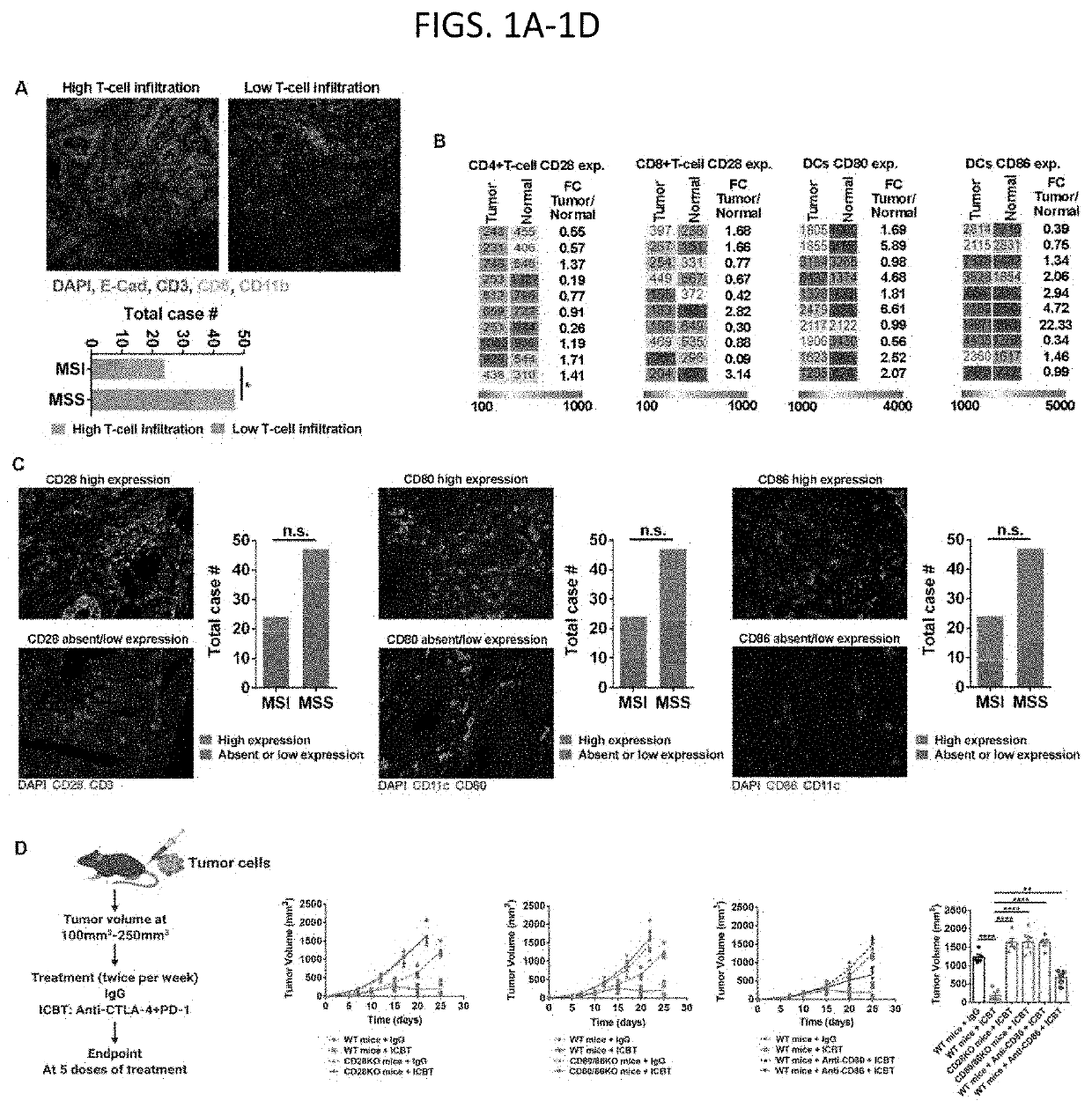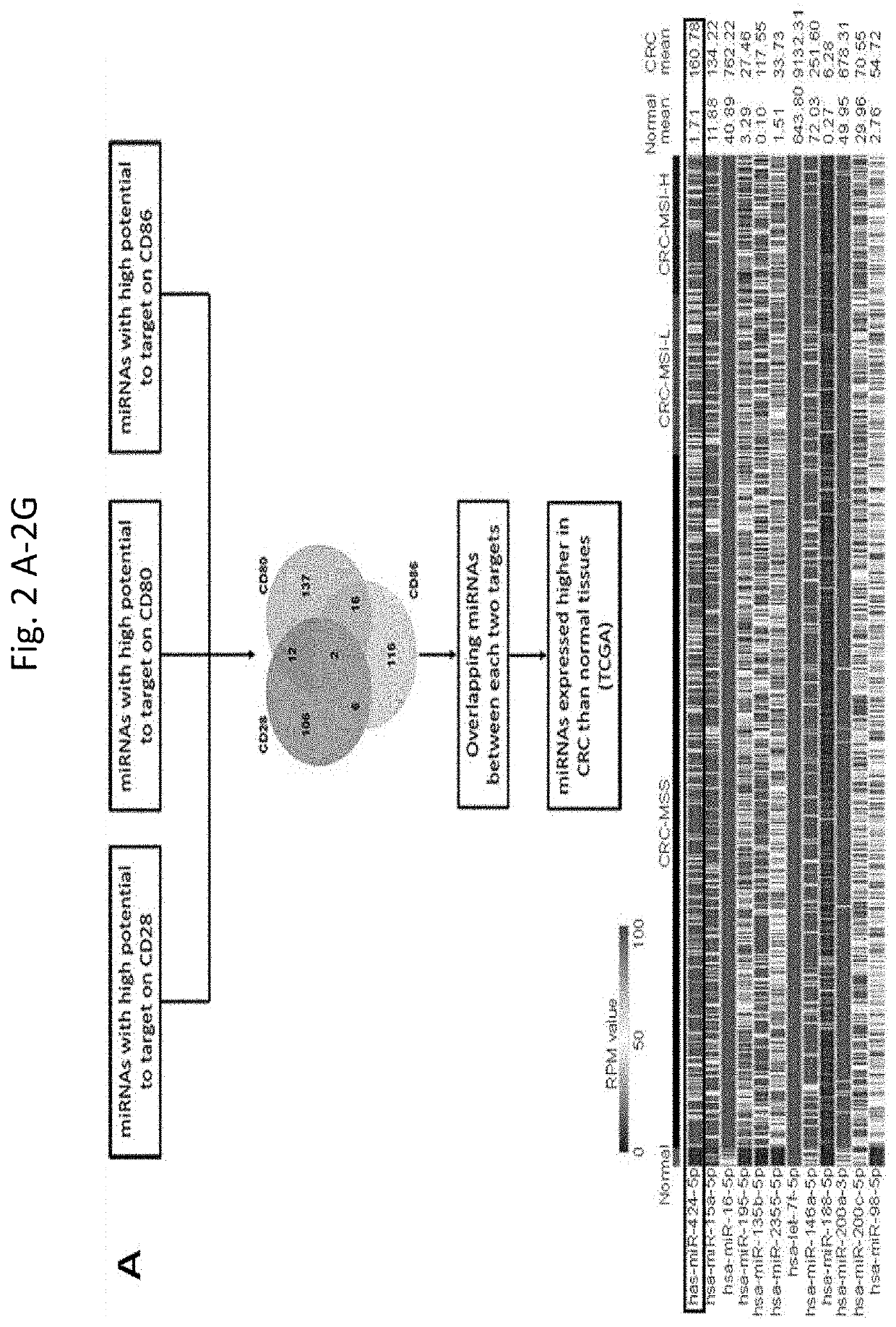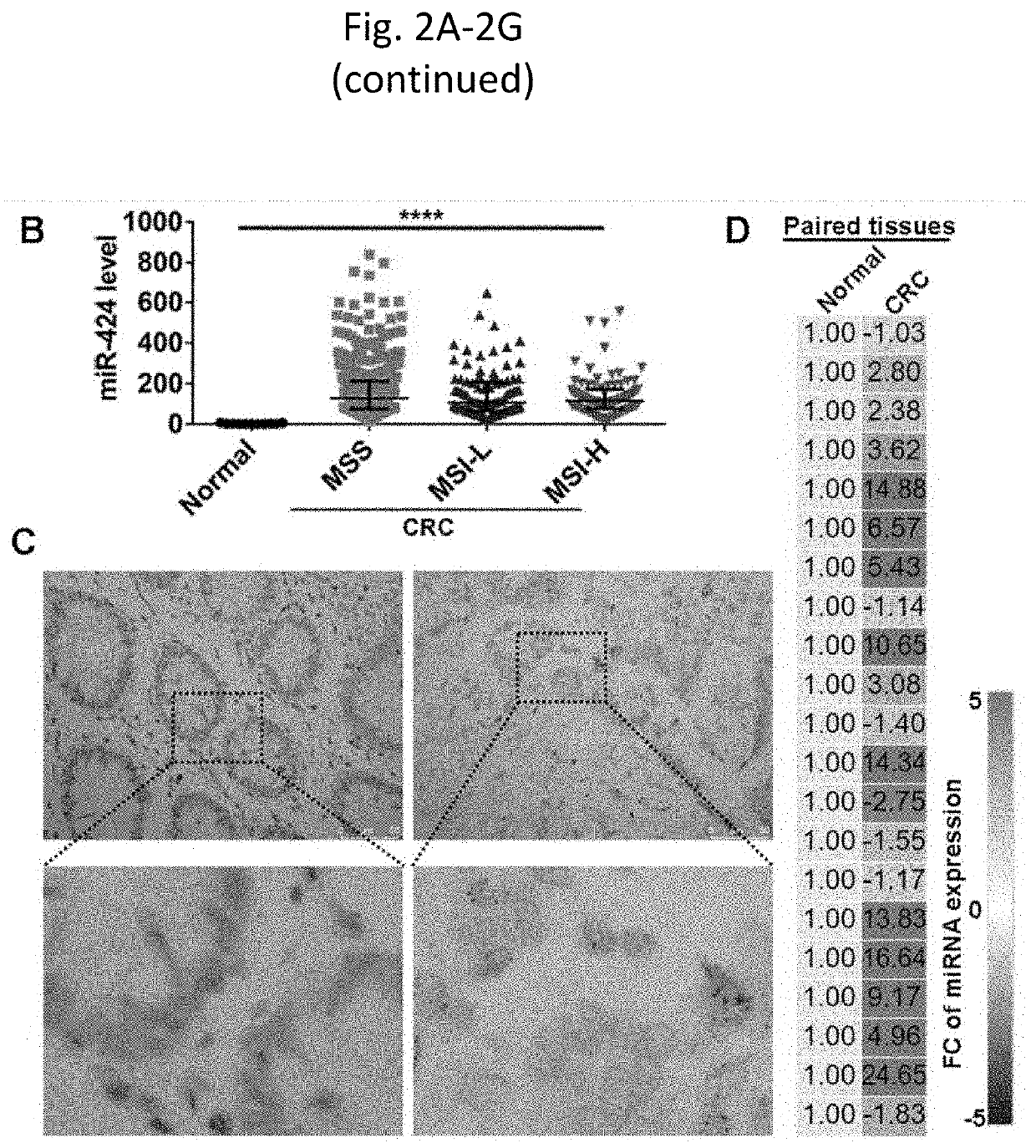Tumor cell-derived exosomes and method of treating colorectal cancer
a tumor cell and exosome technology, applied in the field of tumor cell-derived exosomes and colorectal cancer treatment, can solve the problems of immunosuppression in cancer patients, and achieve the effect of increasing the immune response to tumors
- Summary
- Abstract
- Description
- Claims
- Application Information
AI Technical Summary
Benefits of technology
Problems solved by technology
Method used
Image
Examples
example 1
Tumor Exosomes Prevent Tumor Formation by Stimulating Anti-Tumor Immunity
[0125]This Example demonstrates that reduction of miR-424 in EVs from tumor cells improves the anti-tumor response in the mouse model. This Example further demonstrates that T-cells and antigen presentation cells (APCs) isolated from nonimmunogenic, microsatellite stable (MSS) CRC have lower levels of CD28 and CD80 compared with normal tissues. Downregulation of CD28 in T-cells and CD80 in APCs significantly reduced T-cell priming. The inventors found that CRC tumors have an elevated level of miR-424 compared to the normal colon tissues. MiR-424 showed suppressive effects of CD28 and CD80 expression in immune cells. Further, the inventors demonstrated that miR-424 is present in EVs secreted by CRC cells, which are taken up by T-cells and APCs, thereby affecting their immune-stimulating function in the tumor microenvironment.
[0126]Blocking or genetically deleting miR-424 in tumor cells significantly improved the...
example 2
apy but not the Tumor Draining Lymph Nodes Determine the Immunotherapy Response in Secondary Tumors
[0208]Immunotherapies are used as adjuvant therapies for cancers. However, knowledge of how traditional cancer treatments affect immunotherapies is limited. In the following Example, the inventors use mouse models to demonstrate that tumor-draining lymph nodes (TdLNs) are critical for tumor antigen-specific T-cell response. However, they found that removing TdLNs concurrently with established primary tumors did not affect the immune checkpoint blockade (ICB) response on localized secondary tumor due to immunotolerance in TdLNs and distribution of antigen-specific T cells in peripheral lymphatic organs. Notably, treatment response improved with sequential administration of 5-fluorouracil (5-FU) and ICB compared to concurrent administration of ICB with 5-FU. Immune profiling revealed that using 5-FU as induction treatment increased tumor visibility to immune cells, decreased immunosuppre...
example 3
Tumor-Derived Extracellular Vesicles Prevent Secondary Tumor Formation
[0323]Tumor recurrence after surgery and other treatments is a major cause of death in colon cancer patients. In Example 1, we demonstrated that the modified tumor-derived extracellular vesicles (EVs) are immunogenic in primary tumors. In the present Example, the inventors investigated the effects of modified tumor-derived EVs on preventing secondary tumor formation. To do so, they created a mouse model in which primary tumors are induced and surgically resected before any treatment, and then tumor-derived EVs are used as a preventive treatment before secondary tumor induction. They found that mice treated by the modified tumor-derived EVs are resistant to secondary tumor formation. Further, they tested the dose-dependent effects of modified tumor-derived EVs on tumor prevention and found that 10 μg / injection of the modified tumor-derived EVs generated a superior effect than 5 ug / injection, but that further increa...
PUM
| Property | Measurement | Unit |
|---|---|---|
| Diameter | aaaaa | aaaaa |
| Volume | aaaaa | aaaaa |
| Volume | aaaaa | aaaaa |
Abstract
Description
Claims
Application Information
 Login to View More
Login to View More - R&D
- Intellectual Property
- Life Sciences
- Materials
- Tech Scout
- Unparalleled Data Quality
- Higher Quality Content
- 60% Fewer Hallucinations
Browse by: Latest US Patents, China's latest patents, Technical Efficacy Thesaurus, Application Domain, Technology Topic, Popular Technical Reports.
© 2025 PatSnap. All rights reserved.Legal|Privacy policy|Modern Slavery Act Transparency Statement|Sitemap|About US| Contact US: help@patsnap.com



